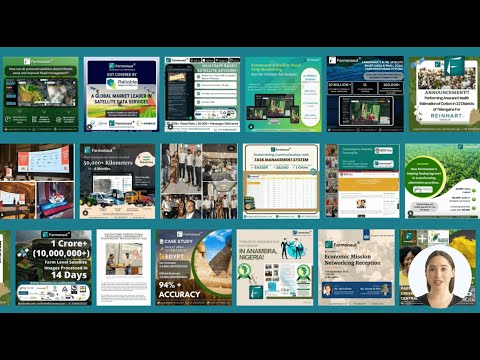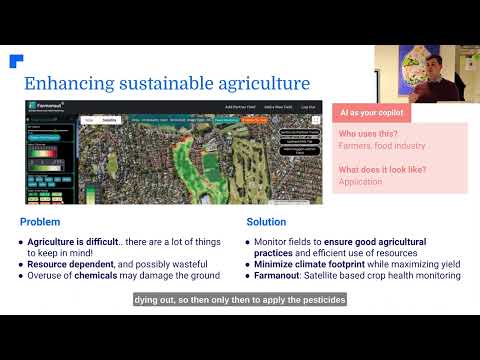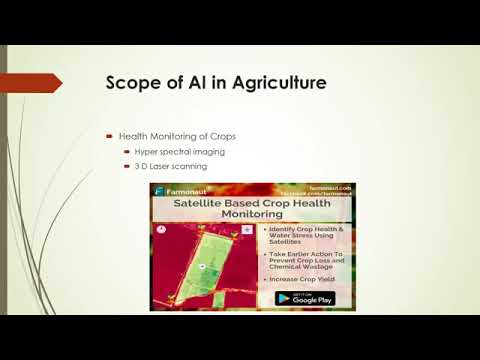Sustainable Winegrowing New Zealand: 10 Powerful 2025 Breakthroughs
“New Zealand’s wine industry cut carbon emissions by 30% between 2010 and 2023 through sustainable practices.”
Sustainable Winegrowing New Zealand Leads the Way
As we reach the 30th anniversary of the Sustainable Winegrowing New Zealand (SWNZ) certification programme, we celebrate a remarkable journey that has positioned New Zealand as a global sustainability leader in the wine industry. This year’s 2025 NZ Wine Sustainability Report brings into focus an inspiring tapestry of progress, data-driven initiatives, and digital transformation across the nation’s vineyards and wineries.
From pioneering carbon footprint reduction in wineries and vineyards to introducing innovative packaging and pest management methods, the New Zealand wine industry sustainability story continues to impress. This post explores the 10 most powerful breakthroughs for 2025, with deep dives into sustainable practices, certifications, and technologies that are revolutionizing winegrowing.
We also explore how technological innovations, including Farmonaut’s satellite-based sustainability tools, AI, and traceability solutions, support these eco-initiatives and provide actionable insights to maintain and scale responsible agricultural practices worldwide.
“Over 96% of New Zealand’s vineyard area is certified under the Sustainable Winegrowing New Zealand program.”
Breakthrough Comparison Table
| Breakthrough | Description | Estimated Carbon Reduction (%) | Eco-Packaging Use (%) | Pest Management Innovation | Implementation Scale |
|---|---|---|---|---|---|
| Targeted Carbon Reduction Initiatives | Initiatives to identify, measure, and reduce carbon emissions at source | 25% (wineries), 18% (vineyards) | 68% (wineries), 56% (vineyards) | No | Nationwide |
| Lightweight Glass Bottles | Switching to bottles with reduced glass thickness to lower packaging footprint | 8–12% | 63% | No | Nationwide |
| Improved Packaging Efficiency | Streamlined packaging design and material use to minimize waste generation | 10% | 32% | No | Growing |
| Recyclable/Biodegradable Packaging | Replacing conventional packaging with recyclable or biodegradable materials | 14% | 68% | No | Nationwide |
| Non-Chemical Pest Management | Applying biological & natural control methods across vineyards | 3% | n/a | Yes (99% coverage) | Nationwide |
| Comprehensive Agrichemical Data Reporting | All applications logged into NZW’s benchmarking database for ongoing analysis and best practice discovery |
0.5% | n/a | Yes (chemical reduction via benchmarks) | Nationwide |
| Mandatory Biosecurity Planning | All vineyards required to implement biosecurity risk management by 2025/26 | 1% | n/a | Yes (prevents pest & disease ingress) | Nationwide |
| UV-C Light for Powdery Mildew Control | ‘A Lighter Programme’ uses UV-C light to reduce fungicide requirements in disease management | 2% | n/a | Yes (innovative disease control) | Pilot/Growing |
| Sauvignon Blanc Genetic Diversification | Developing 12,000+ new Kiwi Sauvignon Blanc variants for resilience | ? (Potential high impact) | n/a | Yes (disease/pest resistance) | Pilot/National (future) |
| Sustainable Employment Code | Voluntary employment code to ensure fair, lawful worker treatment | 0.2% | n/a | No | Nationwide |
Powerful Breakthroughs for 2025 in New Zealand Wine Industry Sustainability
The NZW Sustainability Report 2025 is a testament to the ingenuity, commitment, and leadership demonstrated by winegrowers across the island nation. Let’s explore the key focus areas and headline achievements shaping the landscape:
- Carbon footprint reduction in wineries and vineyards
- Sustainable packaging in wine industry
- Non-chemical pest management vineyards
- Comprehensive biosecurity in New Zealand vineyards
- Innovative disease resistance & genetic research
1. Carbon Footprint Reduction in Wineries and Vineyards
We have seen a significant surge in efforts to reduce carbon emissions across the New Zealand wine industry. According to the latest data, 68% of wineries (a 10% increase from 2022) and 56% of vineyards (up from 41% in 2022) now participate in specialized initiatives targeting the reduction of their environmental footprint.
Some of the most effective measures adopted include:
- Switching to renewable energy sources in wine production processes
- Implementing efficient energy management systems
- Optimizing water use and resource efficiency
- Cutting waste generation and diverting materials from landfills
This collective effort has driven a 30% reduction in sector-wide emissions since 2010—a feat positioning us at the forefront of sustainable winegrowing New Zealand.
If you’re seeking digital solutions to track, analyze, and reduce carbon emissions on your farm or in your agribusiness, learn more about Farmonaut’s Carbon Footprinting solution.
2. Eco-Packaging and Sustainable Packaging in the Wine Industry
Packaging has historically contributed significantly to the wine industry’s carbon footprint. Our collective shift toward sustainable packaging in wine industry settings is evident in these report findings:
- Lightweight glass bottles: 63% of wineries use these, up from 55% in 2022.
- Improved packaging efficiency: Now at 32% of wineries, growing from 23%.
- Recyclable or biodegradable packaging: Adopted by 68% of wineries, rising sharply from 55%.
By adopting circular packaging and reducing the weight of glass bottles, we cut downstream transport emissions and decrease resource extraction impact. Sustainable packaging not only reduces environmental damage but caters to evolving consumer preferences for eco-friendly products.
To explore real-world product tracking and authenticity in packaging and wine logistics, see how Farmonaut’s blockchain-based Traceability solution is transforming supply chain transparency.
3. Innovative Pest Management and Biosecurity in New Zealand Vineyards
A near-universal embrace of non-chemical pest management vineyards sets New Zealand apart in global wine production. 99% of vineyards report using non-chemical methods, emphasizing biological strategies, habitat management, and careful monitoring to minimize agrochemical reliance.
Additionally, 100% of agrichemical applications are now recorded in the NZW’s database to support robust benchmark reporting and analysis. This gives us the data needed for targeted, continuous improvement in pest and disease management.
Looking forward, from the 2025/26 season, biosecurity planning will be mandatory for all SWNZ-certified vineyards—a crucial step given New Zealand’s geographic isolation and clean climate, which help protect the country’s grapevines from many global pests and diseases.
If biosecurity remains a primary concern on your farm, Farmonaut offers powerful large-scale farm management solutions with real-time monitoring and disease alerts.
Key Methods in Non-Chemical Pest Management
- Habitat creation for beneficial insects
- Row management to encourage pest-resilient microclimates
- Canopy management and pruning
- Use of sheep for weed and grass management, reducing herbicide needs
4. Advanced Technologies in Sustainable Winegrowing
Embracing cutting-edge technology, we are seeing transformational results across New Zealand’s wine regions. Here are major highlights:
- UV-C Light for Powdery Mildew Control in vineyards: The ‘A Lighter Programme’—advanced UV-C applications in vineyards—show promise in controlling powdery mildew sustainably, reducing reliance on fungicides.
- Biosecurity Planning via SWNZ: Strategic planning prevents invasive pests and diseases from entering and spreading in New Zealand’s isolated winegrowing regions.
- Bragato Research Institute NZ wine: Development of over 12,000 new Kiwi Sauvignon Blanc variants aims for resilience—drought/frost tolerance and inherent pest & disease resistance.
Each innovation leverages a scientific approach—blending research, data, and field trials to future-proof both product quality and sustainability.
Powdery Mildew Control in Vineyards: UV-C Innovation
A persistent challenge for vineyards is powdery mildew, a fungus that damages grapes and affects yields globally. Conventionally, control relies on repeated fungicide applications. Now, New Zealand’s government-agricultural venture deploys UV-C treatments—a solution that is chemical-free, precise, and scalable. Early trials suggest this approach dramatically lowers fungicide dependence and supports SWNZ’s biosecurity framework by discouraging resistance development.
Bragato Research Institute & Kiwi Sauvignon Blanc Development
Through the Bragato Research Institute NZ wine and its trials, our growers are actively developing 12,000+ new Kiwi Sauvignon Blanc variants. Selection targets key traits:
- Drought tolerance
- Frost resilience in changing climates
- Natural resistance to regional pests and diseases
- Maintaining New Zealand’s reputation for vibrant, distinct Sauvignon Blanc wines
This programme will form the backbone of disease and climate adaptation strategies, ensuring long-term sustainability.
5. Supporting Sustainable Employment Practices
Sustainability is holistic—it’s not just about environmental progress but also about people. 65% of vineyards and 67% of wineries now voluntarily comply with the New Zealand wine industry’s Code of Conduct for employment. This ensures every worker is treated with fairness and dignity, building resilient communities alongside a resilient industry.
Farmonaut Technology: Empowering Sustainable Agriculture
Empowering sustainability in winegrowing doesn’t end with vineyard management practices. Modern wine producers across the globe, including in New Zealand, are turning to technology partners for actionable data and scalable solutions.
-
Farmonaut is a leading agricultural technology provider offering affordable, precision-focused tools for farms and agribusinesses. The Farmonaut platform brings:
- Satellite-based crop health monitoring: Uncover issues in real time, make informed decisions on irrigation, fertilizer, and pest management. Optimize input use and boost sustainable practices without extra on-farm hardware.
- AI-driven advisory: Receive personalized, real-time insights and expert crop management recommendations with the Jeevn AI Advisory System.
- Blockchain-based traceability: Guarantee authenticity for all agri-products from field to bottle with secure, transparent chains. Enhance consumer trust while reducing fraud risk.
Explore Farmonaut Traceability for agri-products - Resource and fleet management: Reduce logistics costs and manage operational fleets with optimal efficiency.
- Carbon footprint tracking: Monitor and measure greenhouse gas emissions, set benchmarks, and access actionable data for compliance and continuous improvement.
See how Farmonaut helps with carbon footprint reduction
- Farmonaut delivers these tools via an intuitive web portal and mobile apps:
Want to integrate weather and satellite data directly into your business or digital solution?
Farmonaut API lets you access advanced agricultural intelligence. Developers can browse developer docs here.
Looking for satellite-based crop area verification to streamline crop loan and crop insurance approvals? Check out Farmonaut’s Satellite Verification for Crop Loan & Insurance. This tool provides digital, indisputable field proofs for financial institutions and growers alike.
For advisory solutions in plantation, forestry, and large-scale farms, visit our plantation and forest advisory page.
Frequently Asked Questions (FAQ)
- What is the SWNZ certification programme?
- It’s the Sustainable Winegrowing New Zealand certification, a nationwide standard introduced by NZW (New Zealand Wine) 30 years ago. It mandates rigorous benchmarks for environmental, social, and economic sustainability across vineyards and wineries in New Zealand.
- How does New Zealand’s approach to pest and disease management differ from other wine-producing nations?
- Due to its geographic isolation and unique climate, New Zealand’s grapevines have been largely protected from many global pest and disease threats. Consequently, the country has focused on non-chemical pest management and strong biosecurity measures, leading the world in sustainable vineyard practices.
- How does the wine industry track agrichemical use?
- 100% of agrichemical applications are entered into the NZW’s digital database for analysis and benchmark reporting, allowing trends to be monitored and best practices to spread.
- What is biosecurity planning and why is it mandatory?
- Biosecurity planning involves proactively assessing and managing risks from invasive pests and diseases. It is now a requirement for all SWNZ-certified vineyards, to preserve the pristine status of New Zealand’s winegrowing regions.
- What role does technology play in achieving sustainability?
- Technology, such as Farmonaut’s satellite imagery, AI analyses, and blockchain tools, enables real-time monitoring, precision resource application, improved traceability, and optimized logistics, making sustainability goals achievable at scale.
- Where can I find more information or tools to apply these breakthroughs?
- Access a suite of sustainability and precision agri-tools—including crop health monitoring, carbon footprint tracking, and traceability—via the Farmonaut platform.
Conclusion
Over the past three decades, sustainable winegrowing New Zealand has evolved from a pioneering certification to a living network of best practices—anchoring the New Zealand wine industry sustainability movement. The 2025 Sustainability Report showcases an industry-wide commitment to innovation, resilience, and responsible stewardship.
From substantial advances in carbon footprint reduction to the widespread adoption of sustainable packaging, innovative pest management, and robust biosecurity, the achievements in New Zealand serve as a blueprint for winegrowing nations worldwide. As we march towards a future that demands both accountability and adaptability, we’re privileged to witness—and participate in—this transformative journey.
To stay ahead on your sustainability journey, embrace data, leverage advanced tools, and integrate proven strategies from global leaders like New Zealand. Whether you’re a grower, winemaker, planner, or researcher, you can achieve more by harnessing technology and collaborative best practices.
Ready to explore the future of sustainable agriculture and vineyard management? Get started on Farmonaut today!
For large-scale farm management, plantation advisory, or implementing resource-efficient sustainable solutions, visit our Agro-Admin Application and forest advisory pages.
Together, let’s create a greener, more resilient future for winegrowing and agriculture—across New Zealand and the world.








